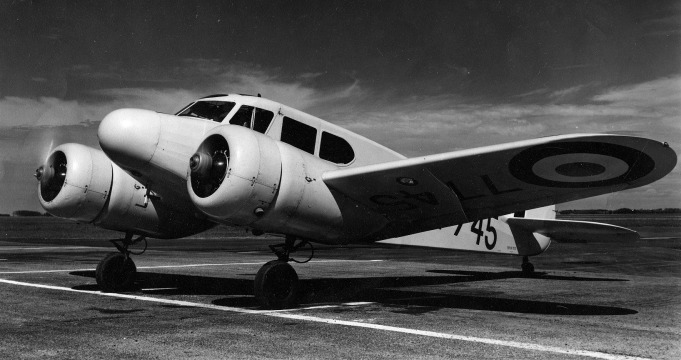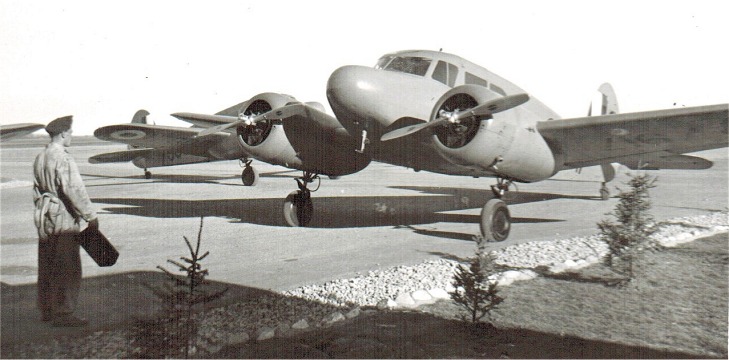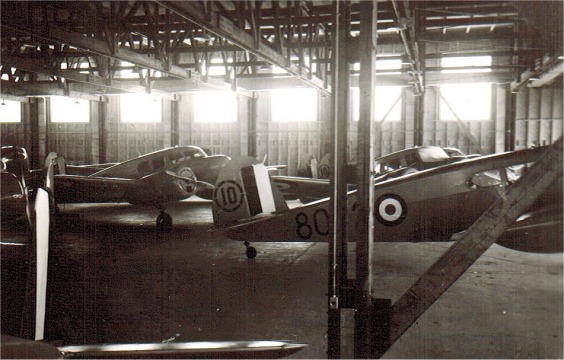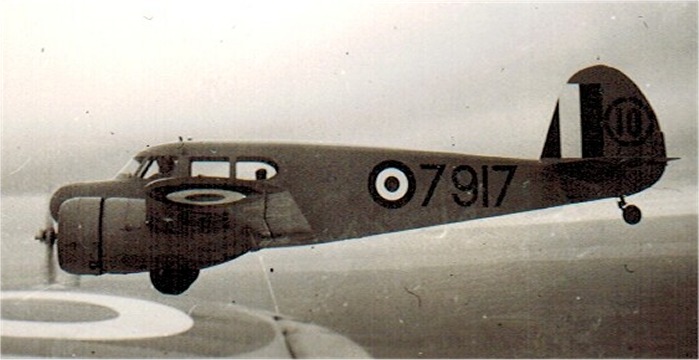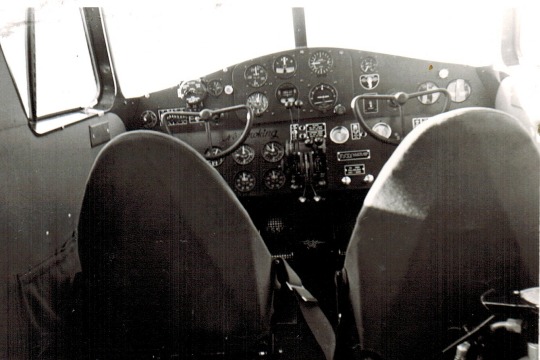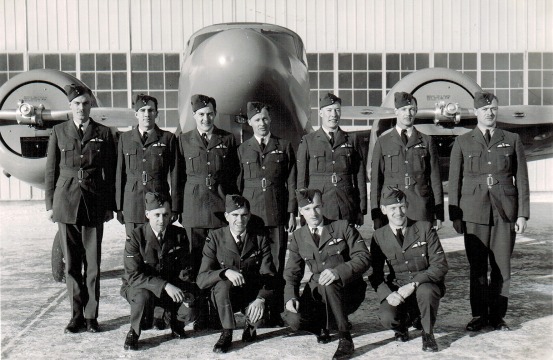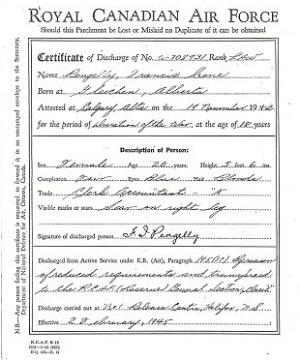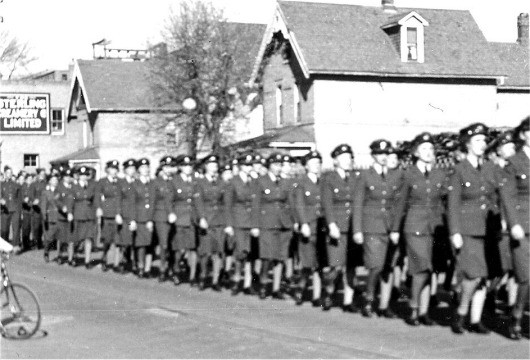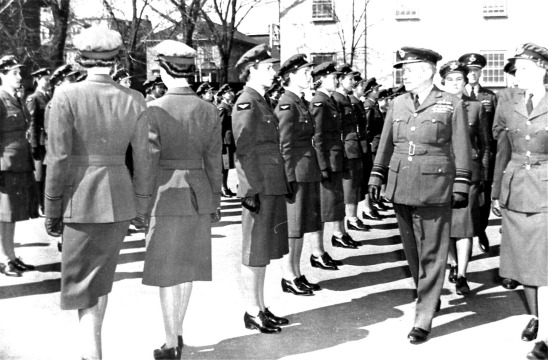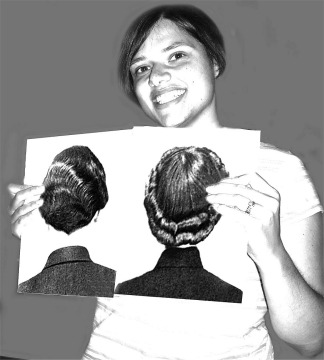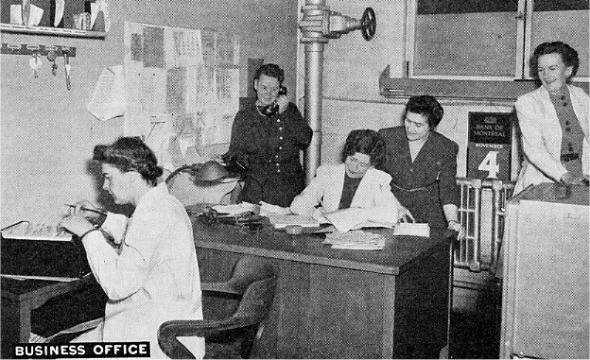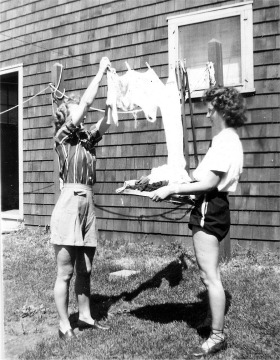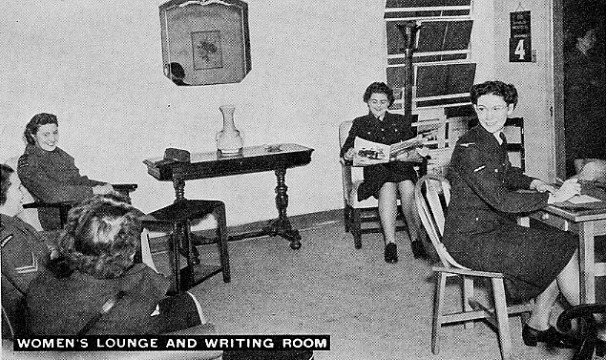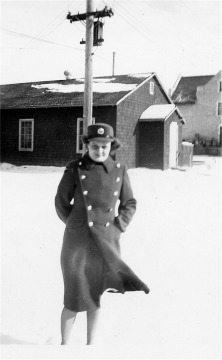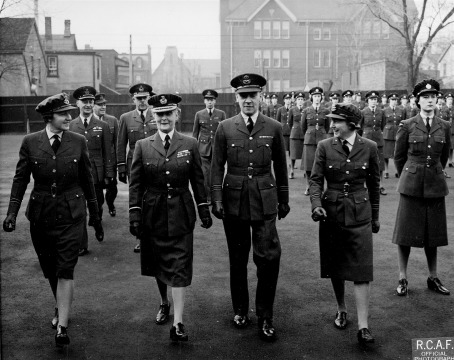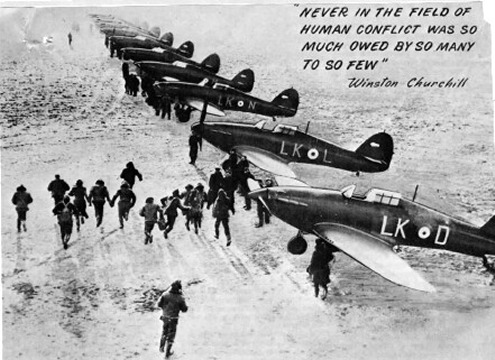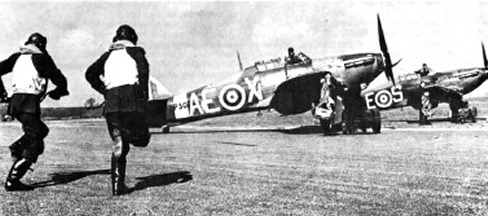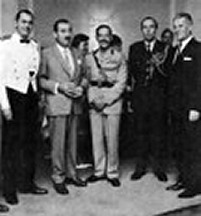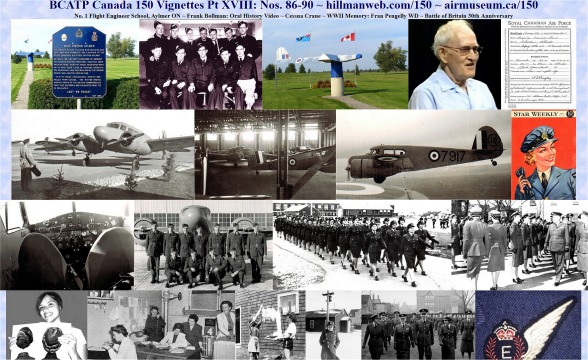089 of
150: A WWII Memory -- Fran Pengelly WD
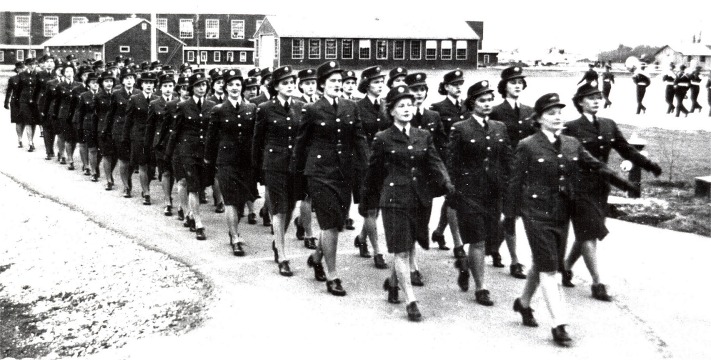
Reflections on my life as a W.D. in the R.C.A.F.
by Frances (McDowell) Pengelly
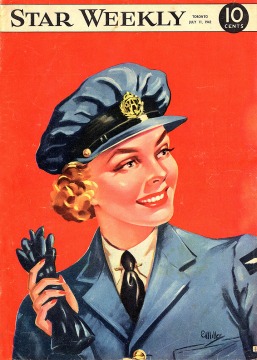 I
was 15 years old when World War II broke out. I was going to high school
in Delburne, Alberta a small town in central Alberta. I was the eldest
child in the family living on a farm just outside the village with my parents,
2 sisters and one brother.
I
was 15 years old when World War II broke out. I was going to high school
in Delburne, Alberta a small town in central Alberta. I was the eldest
child in the family living on a farm just outside the village with my parents,
2 sisters and one brother.
One of the things we as a family did was to turn on Winston
Churchill's broadcast each day to hear about the progress of the war. Anyone
whoever listened to this broadcast could never forget it, Sir Winston had
a very compelling voice and you just couldn't turn the program off. This
of course was on radio as there was no television at that time.
I was pretty young and as soon as Canada entered the war
some of the young men in our area enlisted, this was a much talked about
event as we personally either knew these young men or knew someone who
did know them. It was a very exciting time for us young people. I'm sure
very few of these young men ever thought about the consequences of war
it was just the exciting thing to do. As time went on and the war grew
to have tragic overtures I'm sure people thought more about it but in the
beginning it was just something to do. It wasn't long until some of our
high school classmates were enlisting. Some were very disappointed if they
were rejected, some accepted d this but others felt very differently. We
had one young man commit suicide as he felt so strongly about being rejected,
this was a boy I could remember all through my years at our school. I can
remember when the first boys from our area were sent overseas and also
when the first casualties were reported back to our district.
I was quite upset when my boyfriend David Pengelly enlisted
in the Air Force but he was 19 years of age and excited to join. Dave had
been gone six months or so and I got a job in the local Bank of Montreal
as a clerk keeping track of the ledgers and doing small jobs. I was a good
math student and really loved the work. I moved from my parents’ home to
a small apartment of my own in the Village.
I'm sure my bosses weren't very happy with me but I didn't
ask permission before I applied to join the Air Force. Propaganda definitely
played a part on my enlisting. In November the recruiting officers were
back in town and as of November 19, 1942 I was on leave from the R.C.A.F.(W.D.)
until December 14, 1942 when I was officially given the number W3*****
with the rank of A.W. 2 (air woman second class). I reported to Ottawa
where I was outfitted with clothing and took my basic training. That was
my first Christmas away from home but I was so busy I didn't mind.
We learned to march while here, the biggest problems were
sore feet from not being accustomed to those heavy shoes so blisters were
the order of the day. I had no trouble marching as I was always a good
walker. We girls took 27 inch strides but we had a terrible time when we
would be on parade with the men, they took a 30 inch stride and it always
made us look stupid when we couldn't keep up with them. I'm not sure how
long I was at Ottawa but think it was until sometime in February. We were
assigned to different occupations at this basic training camp.
I was posted to Trenton, Ontario to become a clerk accountant
because of my training in the bank. We were there for the accounting course,
I think about 3 months when we got our first postings. We spent time in
regular classrooms but we also spent considerable time in the drill hall
becoming proficient marchers. We were also given time off and there were
good facilities for amusements, bowling, cards, table tennis to name a
few. I'm sure there were some station dances but I don't remember them.
There would be concerts at times and we were all required to attend church
parades, these of course you were given the choice of religious ceremony
depending on your affiliation. At the end of our training we were required
to write an exam and if you were successful you were given the next posting.
I was sent to No.1 'Y' Depot in Halifax, N.S. This was the embarkation
depot where all the air force personnel reported before going overseas.
There were two sections in the accounting department, one was Pay Accounts
and I believe the other was more or less keeping track of inventory.
I was always in pay accounts, we kept track of the pay ledgers and on pay
parades checked off the names of the airmen and women who were being paid.
The individuals would line up and as they approached us would give their
rank, name and number so we could check their name off to be sure they
were receiving the correct pay envelope.
The Senior Accounting Officer would have the money on
hand and if the names and numbers corresponded with our records the money
would be counted out and handed over to the recipient. Since I was a payroll
clerk as such I got to see anyone from Delburne or elsewhere when we gave
them their last pay packet before they left for overseas,
Halifax was very interesting, this was the first time
I had been near the sea and I loved it. The street cars in Halifax were
very interesting to ride on, we'd nearly have a fit going down some of
the steep hills we were sure the street cars were going to go flying off
course. Service personnel would sing all the wartime songs as you travelled
to and from the downtown area. The ships in the harbour were fascinating
to a prairie girl and I walked many miles sight-seeing. There was lots
to do on the airbase, I went to several dances but it was all jitter-bugging
and I had never learned so was mainly a spectator. I was in Halifax for
ten months and then was posted to No.1 G.R.S. (General Reconnaissance School)
at Summerside, P.E.I. In the beginning of my Air Force career I made no
close friends as we were busy with course work etc. but when I moved to
Summerside life was quite different.
This was an active flying base so we had planes flying
in and out above us all the time. You soon got used to the noise and sometimes
wouldn't even bother to look up. I lived in quite a large barrack block,
the barracks were in the usual 'T' formation, near the front there was
generally a Corporal or Sergeant in charge of the barracks.
On our side there would have been at least 60 girls, there
were double bunks with an open isle between. I generally chose an upper
bunk, my best friend was below me.
Now that I look back our friends were mostly the ones
that were very close to you in the barrack block, a lot of them in the
accounting section but we also had vehicle drivers, cooks, domestic duty
girls etc. The nurses all had senior rank so they were in the Officers’
Quarters. The ablutions were in the cross-section of the 'T', we all did
our own laundry except the majority of us sent our shirt collars to the
Chinese laundry. Our shirts had detachable collars so these came back white,
white and stiff as a board. We had many a sore, raw neck but they did look
nice. As I recall we were given a small clothing allowance to buy our own
undies but everything else was supplied. This may be a good time to explain
our pay, we were given 90 cents a day but of course this was in addition
to room and board. This actually was considered excellent pay, an example
of pay before I joined the bank was helping at a farm home. I would walk
3 miles to get there and would work 8 or 9 hours and would only receive
75 cents for the day’s work. I can't remember what I received at the bank.
After a period of time in the Air Force or after satisfactory work we were
given an extra 5 cents per day. Reclassification to another rank gave you
more money.
I sat near the counter at work and nearly always waited
on anyone who came to make enquiries. Wing Commander Scott was in charge
of our Department, Flight Sergeant Pullam was my immediate boss. There
was a Sergeant and 2 Corporals in our office, these were all men and there
would have been approximately10 or 12 of us girls. The D.R.O.'s were the
daily news postings that we received each day and from these we changed
the pay amounts, reclassification etc. to the records for which we were
responsible, I always enjoyed my work.
One of the highlights for me was going for a plane ride,
arrangements were made for anyone that was on the air-base to have one
free ride if we so chose. One of our male Corporals, Cpl. Glenn Johnston
(a very nice older, married gentleman) and I went on the same plane. The
pilot flew us to Charlottetown and back, I sat next to the pilot and this
crazy guy decided I should see the steeple on the church in the small village
of Kensington. He dove down and me with my weak stomach, my stomach came
up and I knew I was going to be sick. I quick opened the window and stuck
my head outside, it was raining but that didn't stop me from being sick.
The rule in the air force was that if you were sick you washed the aircraft,
fortunately the rain washed everything off so I was saved the chore of
cleaning the plane. My treat of a special ride didn't sit too well but
I was glad I went. I know I spent several hours in a link trainer but I
have no idea why unless it was just to give us an idea of what real flying
was like.
There was no segregation between the men and girls in
the mess half and we were treated as equals in all circumstances.
I can't remember anyone discriminating between us. The Officers had their
own area for eating and sleeping and of course the order of the day was
to always salute an officer wherever you met them providing you were both
wearing your hat. We wore uniforms whenever we were on duty, when in the
barracks we were free to wear whatever we chose unless there was to be
an inspection. We spent hours polishing badges, shoes etc. and our bunks
had to be properly made up at all times. A lot of girls (and men) had difficulty
tying their tie so if they got it correct they generally just tied a slip
knot and put it around their neck and pulled the knot so they didn't have
to start from scratch. We had ironing boards in barracks but very seldom
used them, our uniforms held their press very well so they must have been
made out of quite good material.
One day my girlfriend Peggy MacEachern and I hitch-hiked
to Charlottetown a distance of less than 100 miles. It took us all day,
we rode in wagons, old vehicles, anything that moved. We came back by bus,
there were just so few vehicles in P.E.I. at the time. I think we stayed
at the Y.W.C.A. and we definitely toured the Parliament buildings.
Periodically we were given a 48-hour pass, I was too far
from home to ever get home but some of the girls that lived closer would
get home. We had one barrack mate that would bring back cooked lobsters,
I had never been exposed to such a thing but it was interesting. She would
bring these back and we would hammer them with some tool to break them
open and then the feast would begin. I wasn't a very good participant until
I acquired a taste for them but now I enjoy. The town of Summerside was
about six miles away but there was good bus service from the base. Sometimes
we would go into town but most often we were content to stay on the base.
We had badminton, bowling, pool and various other activities. There were
always picture shows and a few dances.
The only other thing of note while I was stationed in
Summerside was in the winter of 1944, we had terrific snow storms and the
snow banks reached up to the telephone wires. We were just a bunch of kids
and had lots of fun climbing the big snowbanks and sliding down. I don't
know what we used for clothes as we pretty well only had our uniforms.
We must have had a few civilian articles of clothing.
Dave came back to Canada in May of 1944 and we met in
Moncton and were there for 'D-day, June 6, 1944, when the allies invaded
Europe so we listened for war news. I booked into the 'Y' and got a room
at the hotel for Dave. We had corresponded all the time Dave was away and
sometimes we wrote nice letters and sometimes we found things to quarrel
about but eventually things worked out and we took up our relationship
as it had been before enlisting. We spent most of the time in Moncton sitting
through picture shows at the theaters. At this time we decided we would
get married in September at Summerside.
Dave went on to Debert, Nova Scotia for his new posting
and instructing on Mosquitoes and I went back to Summerside. Back in those
days one had to have permission to marry if you weren't 21 years of age.
I had been away from home for over two years but the law still applied.
Can't you hear what young people today would say about that. My Flight
Sergeant said he would forge my Dad's signature but I just couldn't cheat
so wired my Dad for permission. The Women's Division Commanding Officer
helped by taking charge of and getting the hall and the goodies for the
reception. I booked the minister and the church and Dave didn't meet Rev.
Jarvie until he came over the day before the wedding. Sgt. Hap Pullam gave
me away, F.O. Alexander Gibbard, Dave's friend was to be best man but he
got posted back overseas just before the wedding so one of my co-workers,
Cpl. Jeffrey filled in. I changed my name from McDowell to Pengelly and
life continued as before.
A posting came through for me to go overseas that fall.
They asked me if I wished to go and of course I was gung ho so I went to
Lachine, Quebec in preparation to going overseas. Dave was furious, he
would ask to go back overseas if I went, not very fair as he had been over
and why shouldn't I go. Anyway it was taken out of our hands, about that
time the war had progressed and was winding down so the Air Force decided
married women would be discharged. This was later rescinded and married
women could stay in but by that time I had already received my discharge.
I reported to Halifax where I received my discharge papers on February
2, 1945.
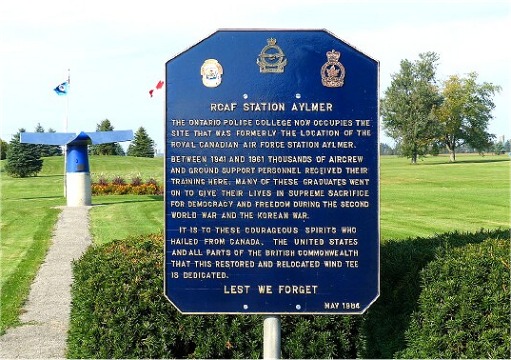
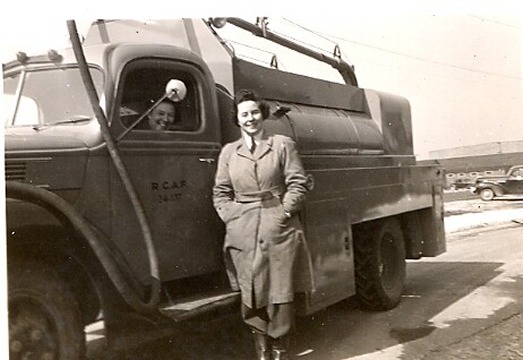
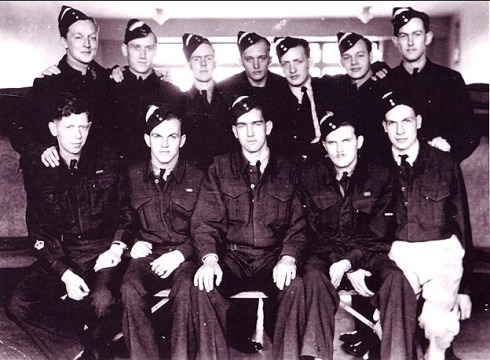
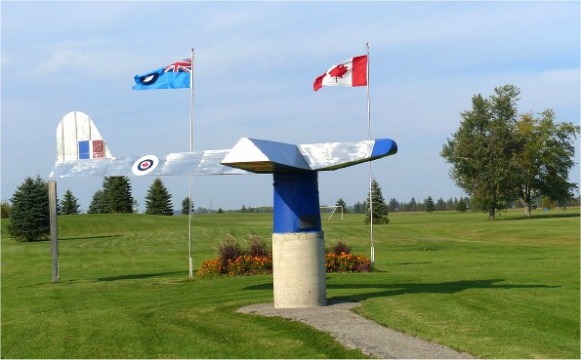
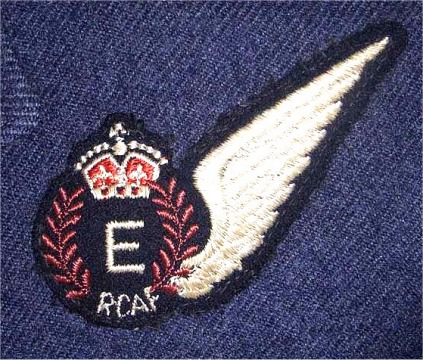
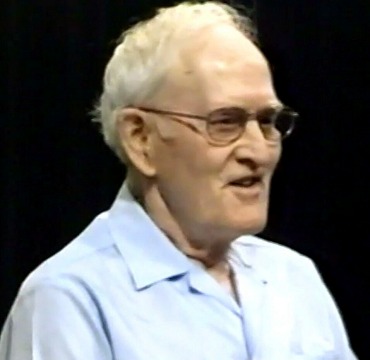 Frank
Bollman was born and raised in Moline Manitoba in 1922. He was one of those
farm boys who wanted to be a member of the Royal Canadian Air Force and
joined up in 1942.
Frank
Bollman was born and raised in Moline Manitoba in 1922. He was one of those
farm boys who wanted to be a member of the Royal Canadian Air Force and
joined up in 1942.
